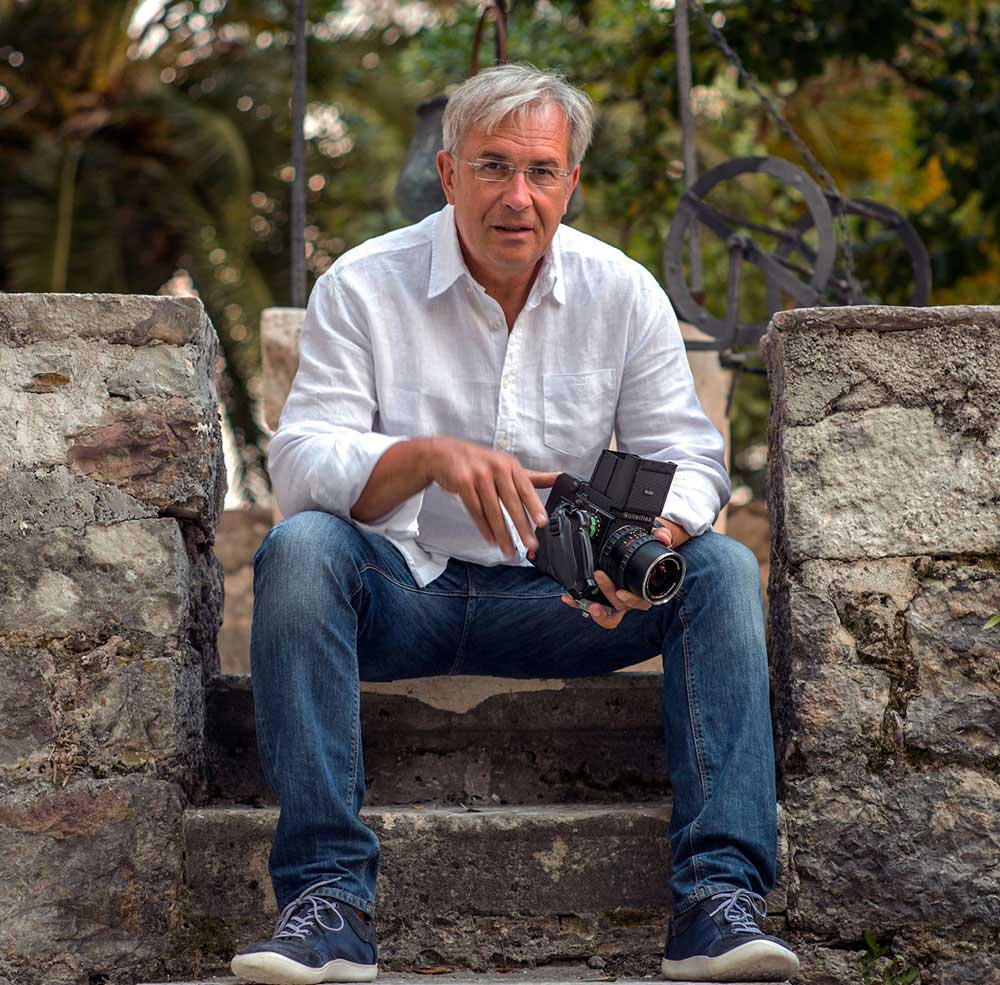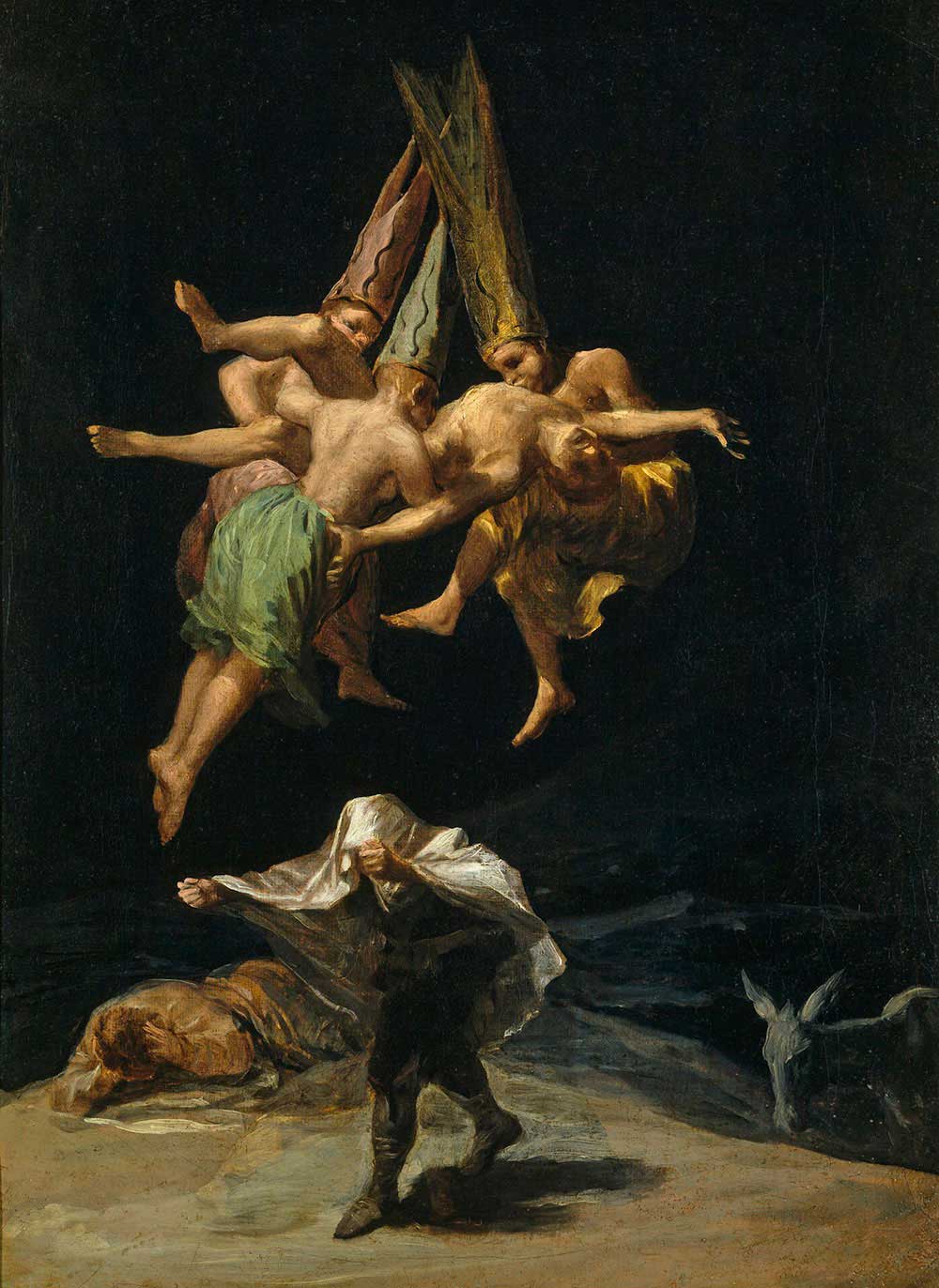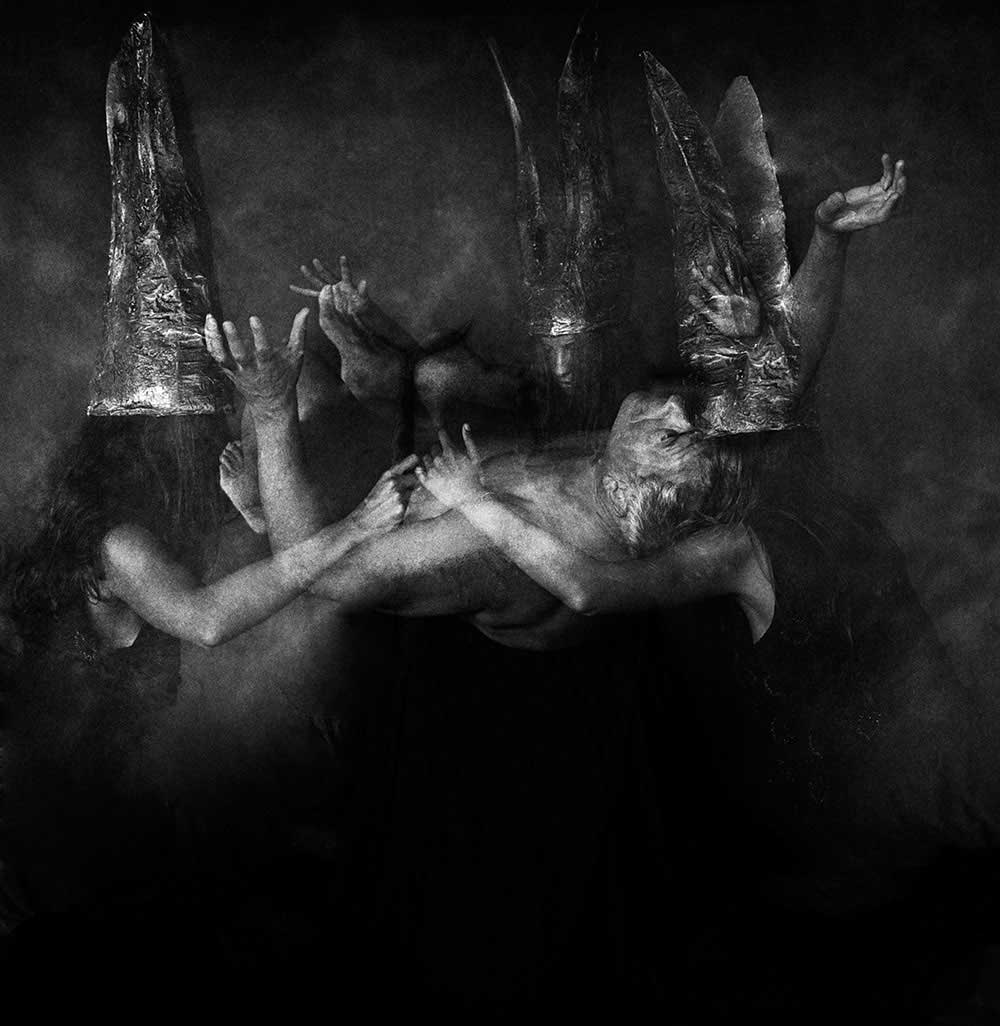Serbian born, Mitar Terzic lives in Spain, in Alicante. He practice photography for twenty years .
Mitar presents a phantasmagoric universe with the masks that he draws and makes by himself. Black & white photos, in square format, are both intriguing and poetic and take us into a world where everyone can imagine his own versión of the story. [Official Website]
Can you tell us a little about yourself?
We could consider the adult person as a “child with the experience” and in the many aspects we are children during all our life. In my photography I want to be a child , with esthetic and cultural knowledge I have acquired during my life. I am interested in fantasy and imagination, and the photography is vehicle to materialize that word, and show it to other people.
Can you explain us the idea or the story behind this image?
After the first answer I think that is easy to understood why I chose the witches as a motif for one of my works. The book “Malleus Maleficarum”, one of the most blood soaked texts in the history, influenced me to went back to the topic which during my childhood impressed me so much.
This book written in the 15 century was a kind of manual for detect and torture the witches and probably is most misogyny book in the human history .”Malleus Maleficarum” killed hundreds of thousand people, predominantly women, during more then two hundred years of Inquisition. As soon as I started with the project I realized that making photography of the witches is not a easy job.
The constant danger was not to fall into banality. The objective of the serie was to present the witches mixing delicacy and femininity with the popular, terrific aspect of the genre. Francisco Goya ́s paintings from the series “Las Pinturas Negras” y “Los Caprichos” was permanent inspiration for me and I took a few of them to make my reinterpretations ..
Can you explain us what equipment you used for its realization?
I am working exclusively with a medium and large format film cameras. For this photograph I used Rolleiflex 6008 Pro medium format camera with Zeiss Sonnar 150 mm lens and Mannfrotto tripod. Film was Ilford HP5 developed in Kodak HC-110. Behind the models was a fabric backdrop and the photography was made with natural light.
Tell us how it is taken from the most technical aspect.
This work is four shots multi exposure photograph. Controlled multi exposure,working with analog equipment, is a delicate technique which frequently demand trial and error process. Precise exposure calculation and and good mental preview of the final photograph are of fundamental importance.
To make my version of Goya ́s painting I used one male and one female model.On the center of the set I put one small table cowered with black fabric. The big sheet of black transparent silk was put over th fabric, changing its position after each shot, to get the illusion of empty space under the central character.The male model was laid on the table and first shoot was made.
For the girl I made the hat similar to those from the Goya ́s painting. This kind of hats were put by Inquisition to women declared witches .After the first exposure was made , the male model leaved the set and three shots of the girl in three different positions were taken. No need to say that camera was not rewinded until the last exposure was made.
What problems and challenges did you face when you took the shot of this image?
The two main problems realizing this photograph were composition and exposure. During each camera shot I had only one figure on the set , so it was fundamental to imagine where others characters will ̈ fall ̈ in the final photograph. They should be close to each other and in natural posture but no superimposed. I had to gave instructions to models about their position because they couldn’t know where the other figures will be located.
On the floor, around the table were marked signs for the girl ́s location for the each shot.Calculating light for multi exposure photograph is always tricky but the big latitude of black and white film is our great ally.
I needed two rolls of film for this work . The first gave me informations about positions of the models , exposure time, and some other problems. In the second roll I had three nice photographs.
We are talking about the postproduction process. How do you get the final result?
My knowledge about Photoshop or other similar programs is very poor. Working with analog equipment generally I do nothing or very little corrections in postproduction. Dust and artifacts elimination, levels and nothing more. For the definitive print of this complex photograph we had to make some small corrections in few critical spots but those interventions were insignificant.









